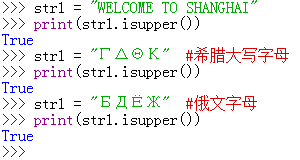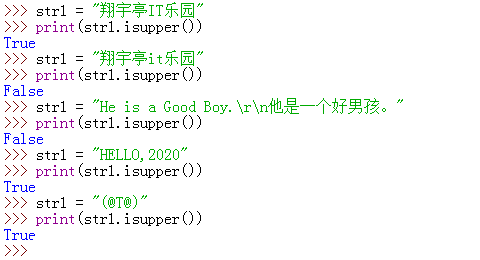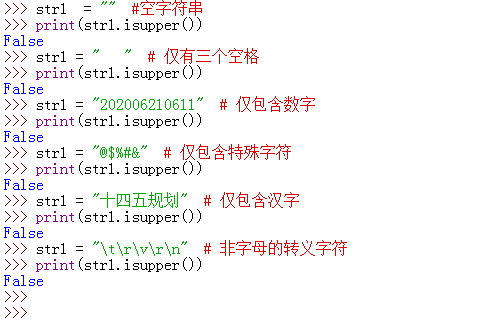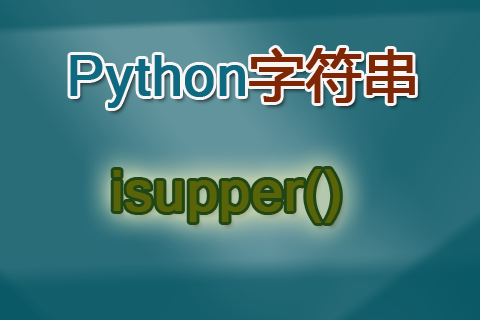Python中的 isupper() 函数的作用是检查一个字符串中的字符是否都为大写形式,如果字符串不为空,且所有字符都为大写形式的话就返回 True ,否则返回 False 。
可以认为,Python 的 isupper() 函数的作用与 islower() 函数是相反的。后者的作用是检查一个字符串的所有字符是否都为小写形式。
str_name.isupper()
str_name是要检查的字符串或字符串变量;
该函数没有参数;
该函数的返回值是逻辑值:True 或 False.
1、只包含字母且所有字符都为大写
str1 = "WELCOME TO SHANGHAI"
print(str1.isupper())
str1 = "ΓΔΘΚ" #希腊大写字母
print(str1.isupper())
str1 = "БДЁЖ" #俄文字母
print(str1.isupper())
在Python3.8.2中的执行情况如下图所示:

2、只包含大小写字母
str1 = "Welcome to Hebei"
print(str1.isupper())
str1 = "ΦσΣ"
print(str1.isupper())
输出:
False
False
3、字母与非字母混排
str1 = "武林网VEVB"
print(str1.isupper())
str1 = "武林网it乐园"
print(str1.isupper())
str1 = "He is a Good Boy./r/n他是一个好男孩。"
print(str1.isupper())
str1 = "HELLO,2020"
print(str1.isupper())
str1 = "(@T@)"
print(str1.isupper())
以上在Python3.8.2中的执行情况如下图所示:

以上示例说明,不管字符串中含有什么字符,但只要字符串中所有字母形式的字符是大写形式,isupper() 函数就会输出 True ,否则就是 False .
4、不包含字母的情况
str1 = "" #空字符串
print(str1.isupper())
str1 = " " # 仅有三个空格
print(str1.isupper())
str1 = "202006210611" # 仅包含数字
print(str1.isupper())
str1 = "@$%#&" # 仅包含特殊字符
print(str1.isupper())
str1 = "十四五规划" # 仅包含汉字
print(str1.isupper())
str1 = "/t/r/v/r/n" # 非字母的转义字符
print(str1.isupper())
以上程序的输出结果形式如下图所示:

以上示例表明,字符串中如果不含任何字母时,isupper() 函数一律输出 False.
Python中 isupper() 函数输出结果的要点在于:
(1)如果一个字符串中不含Unicode字符库中定义的任何字母形式的字符,则isupper()函数输出一定为 False,其中包含空字符串,空白字符,格式控制符以及非字母的文字字符;
(2)如果一个字符串中含有Unicode字符库中定义的字母形式的字符,但字符串中至少包含一个字母的小写形式时,isupper() 函数一定输出 False;
(3)只有当字符串中含有Unicode字符库中定义的字母形式的字符,且所有字母形式的字符为大写形式时,isupper()函数才会输出 True.

新闻热点
疑难解答